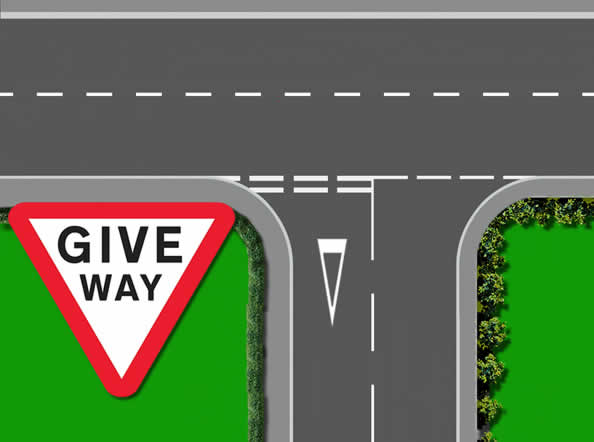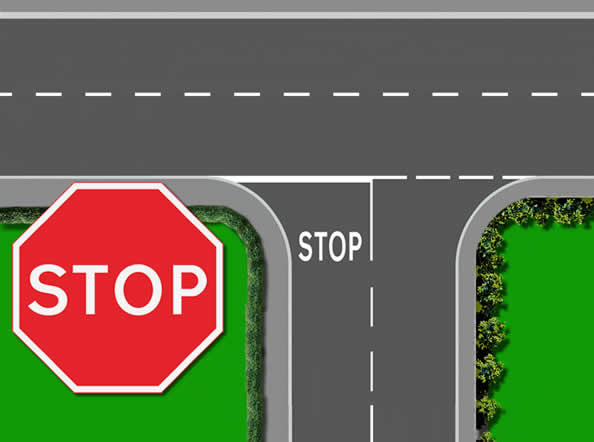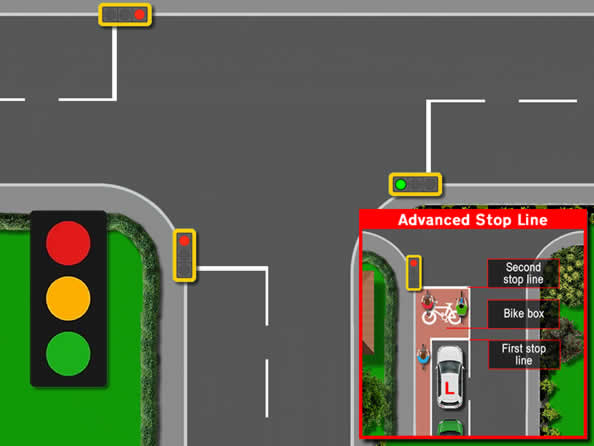As you begin learning to drive, you’ll come across T-junctions with different road markings. Junctions without road markings are called unmarked junctions, but here, we’ll take a look at the various T-junctions that have road markings.
T-Junction with Give Way Road Markings
T-junctions with give way road markings are the most common and are what we call a ‘marked junction‘. Give way road markings are represented by dashed lines that separate the minor road from the major road. The upside down triangle road marking represents the give way sign and provides an additional warning to drivers that a junction is ahead.

You’ll find T-junctions with give way road markings everywhere from busy cities to country roads and are usually in place where areas are less prone to high volumes of traffic and congestion. Not all T-junctions with give way road markings will have a give way sign. Junctions that are potentially more hazardous will often have a sign to warn of the junction ahead. The give way road markings mean ‘stop if necessary’.
T-Junction with Stop Road Markings
You’ll come across far fewer T-junctions with stop road markings when compared to give way junctions. Stop junctions are in place where the T-junction is hazardous, usually due to it being a blind junction. A stop junction is defined by a thick, solid white line that separates the minor road from the major road.

To warn drivers of the hazardous junction ahead, all stop junctions have a red octagonal sign displaying the word ‘STOP’. A stop junction is a mandatory order that requires all motorists to stop just before the line, before proceeding from the minor road into the major road.
Traffic Light Controlled T-Junction Road Markings
T-junctions that control the flow of traffic by use of light signals are called controlled junctions. Road markings are represented by a solid white line that drivers must stop behind when lights are on red or amber. You can continue without stopping if the lights are on amber and you’ve already crossed the line, or if you’re very close to the line, traveling at speed and that stopping may be dangerous to vehicles behind you.

In busy areas where cyclists are common, you’ll often see advanced stop lines (dee inset diagram) at controlled junctions. In this instance, you must stop just before the first stop line and keep the cycle box area clear for cyclists to wait in.